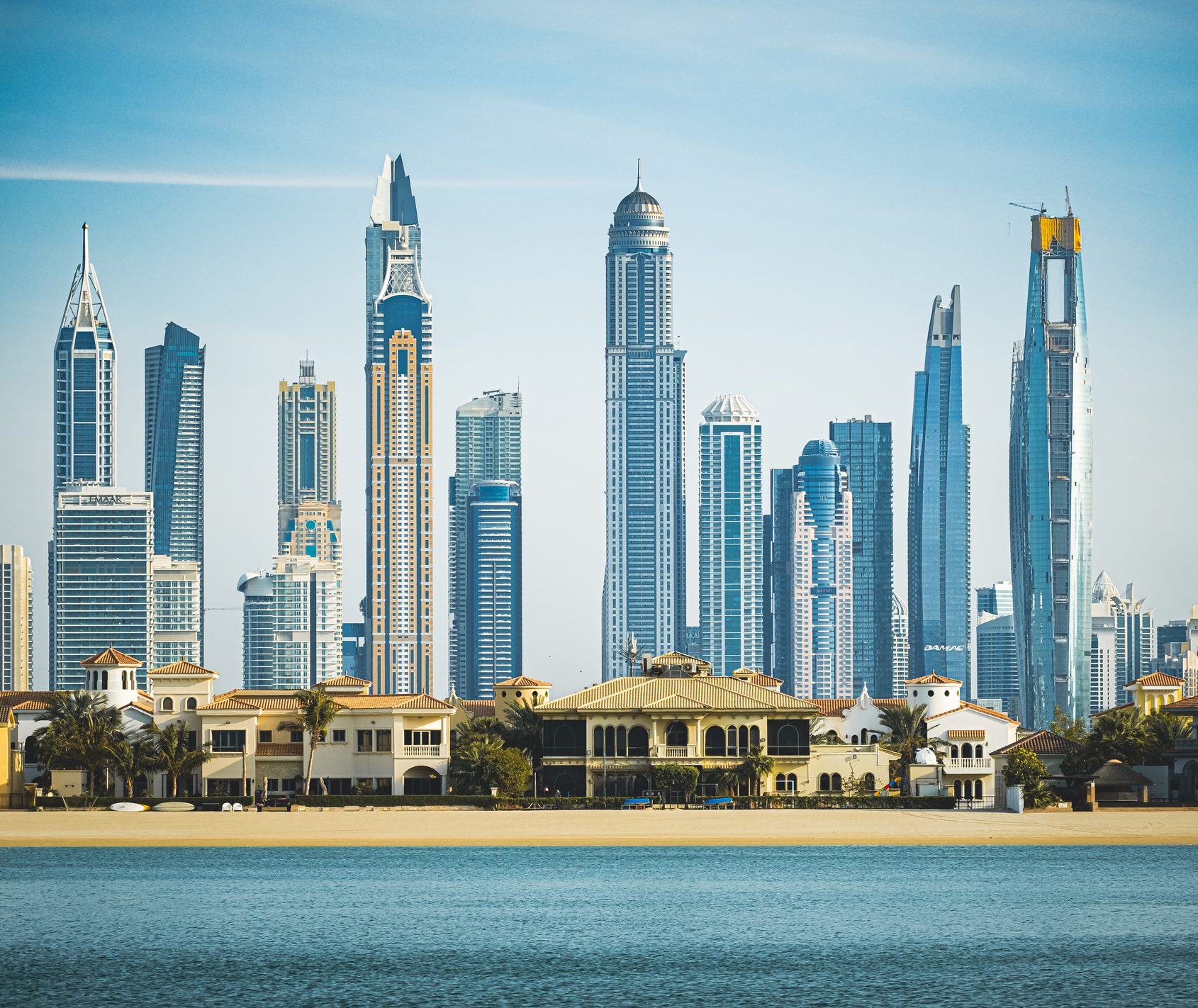While it may have been difficult to predict, it is now becoming increasingly clear that the UAE real estate market prices play a crucial role in shaping travel trends across the region. From driving real estate investment to influencing how tourists experience their destinations, rising real estate prices are making a significant impact. In recent years, the market has shown remarkable stability, especially in areas where tourism is a major economic driver.
As a result, investors have seized the opportunity presented by the growing demand for holiday homes, leading to a natural increase in prices. Prime locations near popular attractions such as the Dubai Mall and Yas Island have become highly sought after by those looking to combine real estate investment with the travel and hospitality sectors. This synergy is further enhanced by government initiatives designed to boost tourism and improve infrastructure; efforts that continue to drive real estate values in high-traffic areas.
In this evolving landscape, the connection between real estate and tourism not only benefits investors but also changes the way visitors experience the UAE, highlighting a new chapter in the region’s dynamic growth.
Real estate prices and tourism in the UAE
There is a compelling link between property prices and tourism in the UAE, which is a clear reflection of the country’s booming economy. In recent years, the real estate market has remained resilient, especially in tourism-driven areas. Iconic landmarks such as the Burj Khalifa, Dubai Marina and the Sheikh Zayed Grand Mosque attract millions of visitors annually, fueling the steady rise in property values in these in-demand locations. This increase is largely driven by increasing demand for vacation rentals, luxury homes and commercial spaces near these popular attractions. As tourism continues to boom, the real estate market is also growing, creating a positive feedback loop that strengthens the economy and further cements the UAE’s position as a global hub for both business and leisure travel.
The UAE’s strategic location, which serves as a crossroads between East and West, only adds to its appeal for tourists and real estate investors alike. Government-led initiatives such as Expo 2024 in Dubai have created a buzz, prompting many to invest in real estate in anticipation of an influx of visitors. As both local and international buyers set their sights on properties close to major attractions, demand continues to drive prices up.
In addition to residential and commercial growth, the expansion of luxury resorts, spas and other hospitality services is further strengthening the real estate market. Developers are increasingly focused on creating properties that cater to both tourists and investors, keeping the UAE at the forefront of luxury tourism. Meanwhile, the rising trend of eco-conscious travel and sustainable building practices is introducing new dynamics in real estate values, as demand for eco-friendly homes continues to grow.
As these forces converge, the UAE’s real estate market is not only booming, but evolving – reflecting broader global trends while also supporting the region’s role as a top destination for travelers and investors alike.
Economic impact of rising real estate prices
Many travelers now prefer to stay in holiday homes, a trend that is increasing demand for real estate in popular tourist destinations such as Dubai and Abu Dhabi. This shift not only stimulates the real estate market, but also generates broader economic benefits. As more international buyers invest in properties in these vibrant tourist centers, demand increases, driving up property prices and creating rental income opportunities. This influx of investment has a ripple effect, fueling job growth in areas such as property management, real estate development and the hospitality sector.
At the same time, rising real estate prices are beginning to impact the tourism sector in new ways. As the cost of real estate rises, so do accommodation prices, which may cause travelers to reconsider their lodging choices. Some may opt for more affordable alternatives and seek accommodation outside high-demand areas to avoid rising costs. These dynamics underline the complex relationship between the real estate market and tourism, and highlight the need for policymakers and industry stakeholders to carefully consider the impact of these trends on the broader economy.
Ultimately, this interconnectedness highlights how shifts in real estate prices and tourism habits are intimately linked, and how both could shape the region’s economic landscape in the years to come. By understanding and responding to these changes, the UAE can continue to thrive as a global destination for investors and travelers alike.
Key Real Estate Trends in UAE

The UAE’s fast-growing tourism sector has had a profound impact on the real estate market, creating a dynamic synergy between the two industries. Investors are increasingly focusing on properties near major tourist attractions, such as the Dubai Mall and Yas Island, where high rental yields and capital growth are virtually assured. As a result, property values in these prime locations are rising, driven by the influx of visitors wanting to experience the best the region has to offer. In response to this demand, luxury amenities and premium services are now essential to attracting luxury tourists who expect nothing less than exceptional experiences.
To meet this rising demand, developers are focusing on creating new luxury residential projects in key tourist districts. Backed by substantial government investment in infrastructure – such as expanded airports, improved transport networks and world-class entertainment venues – these areas are becoming even more desirable. As these locations continue to grow in popularity, the demand for real estate has increased, further strengthening the link between tourism and real estate.
At the same time, recent regulatory reforms have made it easier for foreign investors to purchase real estate in the UAE, opening the doors to a wider range of buyers. These changes have attracted a diverse group of investors, accelerating the growth of the real estate sector and strengthening its deeper ties with the tourism industry. Together, these developments suggest a promising future where real estate and tourism continue to fuel each other’s success, propelling the UAE to new heights as a global destination.
Navigating the UAE’s travel landscape amid rising costs

As the UAE continues to invest heavily in the tourism sector, the rise in real estate prices has become an inevitable consequence. New attractions ranging from world-class theme parks to luxury resorts and cultural attractions are attracting more visitors than ever before. This influx is driving up the cost of staying in popular tourist areas like Dubai and Abu Dhabi, as demand for accommodations in these areas continues to rise. For investors, this boom offers an excellent opportunity to benefit from the growing need for holiday homes and luxury real estate. However, the challenge lies in balancing this rapid growth with the need to remain competitive in the wider travel and hospitality landscape.
Government-backed infrastructure projects – such as expanded airports and improved public transport systems – have made it easier for tourists to navigate the country, further increasing the appeal of locations near major attractions. These developments have not only improved accessibility, but also increased the desirability of housing in these areas, contributing to the continued increase in property values. As a result, these locations become even more attractive to investors and travelers alike.
However, as costs rise, travelers may increasingly seek affordable alternatives to more expensive options. This shift could have a significant impact on the dynamics of the local tourism market, especially in districts with high demand. This in turn poses a unique challenge for stakeholders to ensure that growth in both tourism and the real estate sector remains sustainable, without sacrificing key segments of visitors. As the UAE continues to develop, striking this balance will be critical to maintaining its position as a leading global destination.
Conclusion
In conclusion, the UAE real estate market is booming, driven by the country’s continued development in tourist-oriented destinations. Prime locations near iconic attractions such as the Dubai Mall and Yas Island have become highly lucrative investments, capitalizing on the region’s increasing appeal to visitors and investors alike. Large-scale infrastructure projects and government-backed initiatives to support tourism continue to drive growth in property values, further cementing the UAE’s status as a global real estate hotspot. As the market develops, these interconnected tourism and real estate sectors are poised to further the country’s continued success on the global stage.
Featured image: StockByM/iStock
Follow us on Instagram for the latest news in fashion, lifestyle and culture @StyleRave_
—Read also





